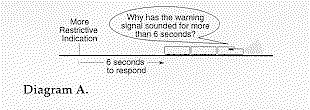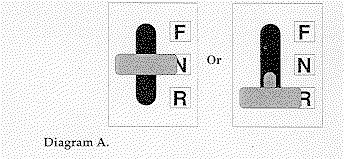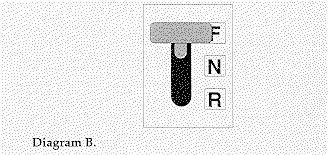




Return to Table of Contents
The Automatic Cab Signal (ACS) system is used in addition to block signals to govem the use of blocks. However, employees must continue to observe rules that govem the use of block signals as well as other rules, except as outlined in Rules 13.2.1 (Restrictive to More Favorable) and 13.2.2 (Favorable to More Restrictive).
The cab signal and block signal systems are interconnected so that the cab signal agrees with the block signal indication within 8 seconds after the engine passes the block signal that governs entrance into a block.
 Exception
Exception
The ACS system is to be considered inoperative through turnouts and crossovers. Block signal indications and speeds specified in the special instructions for each turnout govern movements through turnouts and crossovers.
Cab signals will not indicate conditions ahead when the engine is:
The cab signal on the lead unit must be cut in before entering and while operating within ACS territory and placed in partial cutout after leaving ACS territory.
 The cab signal must be placed in partial cutout on all
trailing units in ACS
territory.
The cab signal must be placed in partial cutout on all
trailing units in ACS
territory.  Before taking charge of an engine in or approaching ACS
territory, the
engineer must know that the cab signal devices are cut in and operative.
The engineer must
make a departure test if necessary.
Before taking charge of an engine in or approaching ACS
territory, the
engineer must know that the cab signal devices are cut in and operative.
The engineer must
make a departure test if necessary.
Do not cut out cab signal devices while the train is in ACS territory, unless authorized to do so.
When a cab signal changes from a restrictive to a more favorable indication where a block or interlocking signal is not located, train speed must not increase until the train moves a distance equal to its length or reaches the next governing block signal, whichever occurs first.

When a cab signal changes to a more restrictive indication, the engineer must comply promptly with the indication received.
Acknowledging Restrictive Indication When a cab signal changes to a more restrictive indication, the engineer must acknowledge the change with the acknowledging device. On engines not equipped with the Coded Cab Signal-Safety Control (CCS-SC) System, another member of the crew must immediately find out from the engineer why the warning whistle sounded longer than 6 seconds. When conditions require, the crew member must stop the train immediately.
 On engines equipped with CCS-SC, the engineer must
acknowledge the change
within 6 seconds of receiving it to avoid a penalty brake application.
On engines equipped with CCS-SC, the engineer must
acknowledge the change
within 6 seconds of receiving it to avoid a penalty brake application.
 Penalty Brake Application Occurs
Penalty Brake Application Occurs
On engines equipped with CCS-SC, if the engineer does not acknowledge the more restrictive indication, a full service penalty brake application will occur automatically within 6 to 8 seconds. When this occurs, the engineer must do the following:
To keep the audible indicator from sounding while the train is stopped in a cab signal test loop, place the reverser handle in either the neutral or reverse position. This will change the cab signal to its most restrictive aspect. After acknowledging the signal change, no more signal changes will be received.
 Place the reverser handle in the forward position to
automatically restore
the equipment to normal operation.
Place the reverser handle in the forward position to
automatically restore
the equipment to normal operation.
 Since the reverser handle in trailing units is in neutral
position, the
audible indicator is automatically silenced on trailing units.
Since the reverser handle in trailing units is in neutral
position, the
audible indicator is automatically silenced on trailing units.
If the cab signal does not display the proper ACS aspect shown in the Block and Interlocking Signal Rules, the engineer must follow the most restrictive block or cab signal indication. The engineer must promptly notify the train dispatcher of the location, signal number, and track where the signals did not agree.
The ACS system is to be considered inoperative when:
Known in Advance
When it is known in advance that the ACS system is inoperative in a specific area, crew members will be notified with a track bulletin.
When it is determined the cab signal device is inoperative, the train may proceed according to block signal indications. However, the train must not exceed 40 MPH until it reaches a point where a crew member can report the defect to the train dispatcher.
 The train dispatcher will:
The train dispatcher will:
When the cab signal device has been cut out, the train must:

Next Chapter - Track Warrant Control